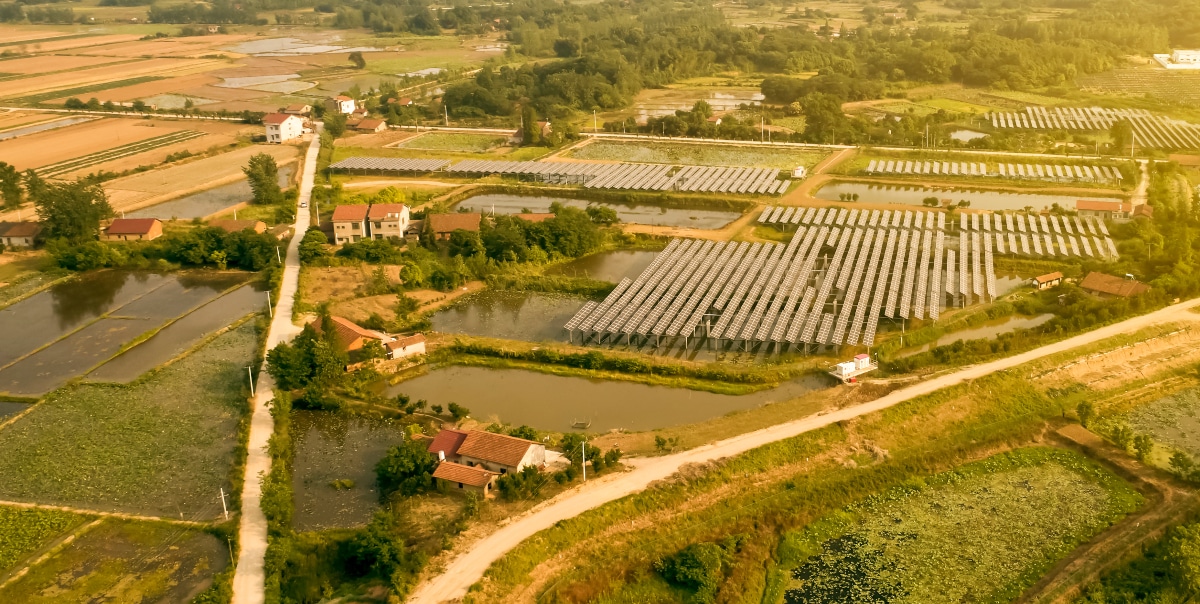Nanogrids - The Smaller But Smarter Solution to Rural Electrification

4 Min. Read
As electric vehicle (EV) ownership takes off in cities and suburbs, EV uptake in rural areas lags. Factors such as longer typical driving distances play a part, but access to inexpensive and reliable electricity may be the real culprit.
Rural areas lack the grid infrastructure that urban areas enjoy, and in turn the power needed for EV charging. Rural electrification is much less advanced than urban electrical infrastructure, and grid upgrades do not come easy or cheap. Many rural areas may not ready for EVs.
Nanogrids could be the answer, making clean and affordable energy more accessible while reducing the load on the primary grid. New technologies, government funding and customer demand could make them commonplace and drive EV adoption beyond city limits.
Challenges of rural electrification
Rural electrification is challenging on several levels, both technical and economic. These challenges are not new and have remained consistent since rural areas were first electrified.
Electric utilities find it more profitable to supply power to city dwellers than to serve customers in remote areas. Urban areas spread infrastructure costs over more customers, bringing costs and revenues into a relative balance.
That is not the case in rural areas, as one electric line may serve only a handful of customers. That same line may stretch for many miles, making costs per customer much higher for rural electrification.
In addition, much of rural electrical infrastructure is old and was built when customers were fewer and typical usage was much lower. It’s safe to say that rural power lines and other infrastructure were not built with the idea of charging EVs. So while these areas can upgrade the current rural infrastructure, utilities have little incentive to make the investment to modernize.
What is a nanogrid?
A nanogrid is a decentralized power distribution system designed to serve a single house or building. Typically fed by locally generated renewable energy such as solar, it can also connect to the wider grid via a gateway.
A battery storage system is an integral part of saving power and can be charged with solar panels. The storage battery can help power the home and in some cases transmit unneeded power back to the grid for profit.
Continuing efforts to push EV adoption in rural areas
The push for EV adoption in rural areas continues as automakers, the U.S. government and others work to make it easier and more attractive to drive an EV. The development of electric trucks promises to make EV ownership more attractive to rural drivers, and as driving ranges increase, the long distances driven in rural areas will become less of a concern.
The federal government continues to advocate for EV adoption, and those efforts extend to drivers in rural areas. Many government programs, such as those run by the Department of Energy as part of the recently passed infrastructure bill, are in the works, and many focus on the rural adoption of EVs.
Efforts to modernize rural infrastructure
Though various stakeholders are working to modernize rural grids, upgrades to the current infrastructure likely will not meet the immediate increased electrical demand created by the broad rural adoption of EVs. The costs would be too high, and utilities lack sufficient incentive to make the investments needed to support charging for millions of new EVs.
So, it makes more sense to rethink this model and adopt an infrastructure model based on local energy production and nanogrids.
Benefits and solutions of nanogrids in rural areas
New technology is making nanogrids easier to use and more effective. With this model, a home or building can rely on local energy production from solar panels or even wind or hydropower.
New technology allows switching to the primary grid as needed, but battery storage increases resilience and enables free energy to be used. So the grid will be there if needed, but only as a backup and not as the primary power source.
Nanogrids make sense in rural areas where infrastructure is inadequate and repairs can take longer. They increase resilience for isolated communities and protect the environment while enabling a more independent and sustainable lifestyle.
Additional nanogrid solutions
Nanogrids are also a viable solution in developing countries, where access to electricity in rural areas remains a challenge. Replacing conventional landline phone networks with decentralized cellular phone networks is an excellent model to follow. Just as with cell phones, nanogrids could jump-start access to electricity faster and less expensively than a conventional grid.
Qmerit can help
Nanogrids are a promising new development and one that can enable at-home charging for rural EV drivers. Did you know that EV owners do 80% of their charging at home, generally overnight? Installing a Level 2 Charging Station makes charging at home both possible and easy. You can find Certified Installers for a Level 2 EV Charging Station by contacting Qmerit. We’re here to help.
